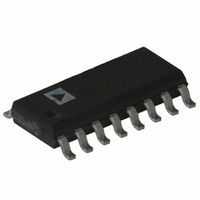AD7888AR Analog Devices Inc, AD7888AR Datasheet - Page 6

AD7888AR
Manufacturer Part Number
AD7888AR
Description
IC ADC 12BIT 8CH SRL 16-SOIC
Manufacturer
Analog Devices Inc
Datasheet
1.AD7888ARZ.pdf
(17 pages)
Specifications of AD7888AR
Rohs Status
RoHS non-compliant
Number Of Bits
12
Sampling Rate (per Second)
125k
Data Interface
DSP, MICROWIRE™, QSPI™, Serial, SPI™
Number Of Converters
1
Power Dissipation (max)
3.5mW
Voltage Supply Source
Single Supply
Operating Temperature
-40°C ~ 105°C
Mounting Type
Surface Mount
Package / Case
16-SOIC (0.154", 3.90mm Width)
Available stocks
Company
Part Number
Manufacturer
Quantity
Price
Company:
Part Number:
AD7888AR
Manufacturer:
JOHANSON
Quantity:
15 000
Part Number:
AD7888AR
Manufacturer:
ADI/亚德诺
Quantity:
20 000
Part Number:
AD7888AR.
Manufacturer:
ADI/亚德诺
Quantity:
20 000
Part Number:
AD7888ARU
Manufacturer:
ADI/亚德诺
Quantity:
20 000
Part Number:
AD7888ARU-REEL7
Manufacturer:
ADI/亚德诺
Quantity:
20 000
Company:
Part Number:
AD7888ARUZ
Manufacturer:
ADI
Quantity:
1 000
Part Number:
AD7888ARUZ
Manufacturer:
ADI/亚德诺
Quantity:
20 000
AD7888
TERMINOLOGY
Integral Nonlinearity
This is the maximum deviation from a straight line passing
through the endpoints of the ADC transfer function. The end-
points of the transfer function are zero scale, a point 1/2 LSB
below the first code transition, and full scale, a point 1/2 LSB
above the last code transition.
Differential Nonlinearity
This is the difference between the measured and the ideal 1 LSB
change between any two adjacent codes in the ADC.
Offset Error
This is the deviation of the first code transition (00 . . . 000) to
(00 . . . 001) from the ideal, i.e., AGND + 0.5 LSB.
Offset Error Match
This is the difference in offset error between any two channels.
Gain Error
This is the deviation of the last code transition (111 . . . 110) to
(111 . . . 111) from the ideal (i.e., V
offset error has been adjusted out.
Gain Error Match
This is the difference in gain error between any two channels.
Track/Hold Acquisition Time
The track/hold amplifier returns into track mode at the end of
conversion. Track/Hold acquisition time is the time required for
the output of the track/hold amplifier to reach its final value,
within ± 1/2 LSB, after the end of conversion.
Signal to (Noise + Distortion) Ratio
This is the measured ratio of signal to (noise + distortion) at the
output of the A/D converter. The signal is the rms amplitude of
the fundamental. Noise is the sum of all nonfundamental sig-
nals up to half the sampling frequency (f
ratio is dependent on the number of quantization levels in the
digitization process; the more levels, the smaller the quantiza-
tion noise. The theoretical signal to (noise + distortion) ratio for
an ideal N-bit converter with a sine wave input is given by:
Thus for a 12-bit converter, this is 74 dB.
Total Harmonic Distortion
Total harmonic distortion (THD) is the ratio of the rms sum of
harmonics to the fundamental. For the AD7888, it is defined as:
where V
V
sixth harmonics.
4
, V
5
and V
Signal to (Noise + Distortion) = (6.02 N + 1.76) dB
1
is the rms amplitude of the fundamental and V
THD dB
6
are the rms amplitudes of the second through the
(
) log
=
V
2
2
+
V
3
REF
2
+
V
V
– 1.5 LSB) after the
S
1
4
/2), excluding dc. The
2
+
V
5
2
+
V
6
2
2
, V
3
,
Peak Harmonic or Spurious Noise
Peak harmonic or spurious noise is defined as the ratio of the
rms value of the next largest component in the ADC output
spectrum (up to f
fundamental. Normally, the value of this specification is deter-
mined by the largest harmonic in the spectrum, but for ADCs
where the harmonics are buried in the noise floor, it will be a
noise peak.
Intermodulation Distortion
With inputs consisting of sine waves at two frequencies, fa and
fb, any active device with nonlinearities will create distortion
products at sum and difference frequencies of mfa ± nfb where
m, n = 0, 1, 2, 3, etc. Intermodulation distortion terms are
those for which neither m nor n is equal to zero. For example,
the second order terms include (fa + fb) and (fa – fb), while the
third order terms include (2fa + fb), (2fa – fb), (fa + 2fb) and
(fa – 2fb).
The AD7888 is tested using the CCIF standard where two
input frequencies near the top end of the input bandwidth are
used. In this case, the second order terms are usually distanced
in frequency from the original sine waves while the third order
terms are usually at a frequency close to the input frequencies.
As a result, the second and third order terms are specified sepa-
rately. The calculation of the intermodulation distortion is as
per the THD specification where it is the ratio of the rms sum of
the individual distortion products to the rms amplitude of the
sum of the fundamentals expressed in dBs.
Channel-to-Channel Isolation
Channel-to-channel isolation is a measure of the level of crosstalk
between channels. It is measured by applying a full-scale 25 kHz
sine wave signal to all nonselected input channels and determin-
ing how much that signal is attenuated in the selected channel.
The figure given is the worst case across all four or eight chan-
nels for the AD7888.
PSR (Power Supply Rejection)
Variations in power supply will affect the full-scale transition,
but not the converter’s linearity. Power supply rejection is the
maximum change in the full-scale transition point due to a
change in power-supply voltage from the nominal value.
S
/2 and excluding dc) to the rms value of the
REV. C













